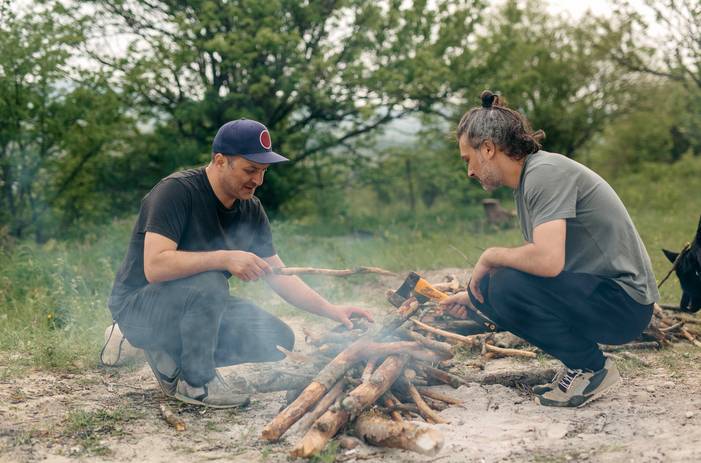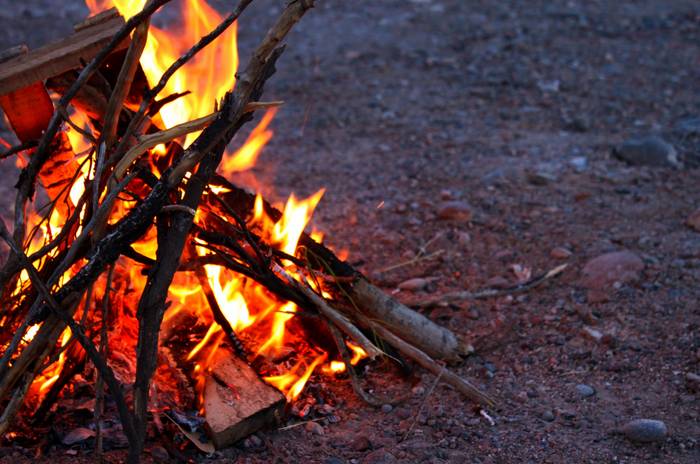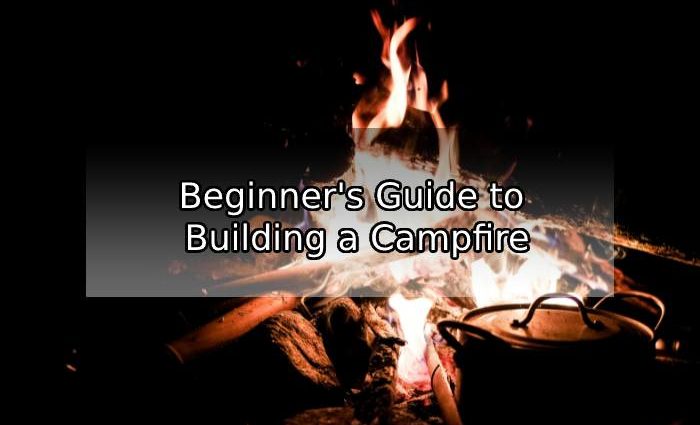Though stoves and lanterns can perform just about all the practical functions of open fires, they can’t replace the warmth and ambiance of a crackling wood campfire. However, campfires have become controversial, as they can cause enormous wildfires if built carelessly in dry or windy conditions.
When you’re on your trip, make sure you know your specific campground’s campfire rules. Fires are often prohibited during dry seasons, and campgrounds may have other additional regulations.
Table of Contents
Choose a Space or Create a Fire Ring
To keep your impact on nature to a minimum, use an existing fire ring or fire pit. There are usually plenty to pick from in established campgrounds—just look for a ring of rocks surrounded by a cleared area.
If you can’t find an existing fire ring, you can dig your own fire pit that is roughly 2 feet in diameter and 8″ deep. (The area around the fire pit should also be cleared by at least 8 feet.) Use the soil that you’ve dug up to form a wall around the perimeter of the pit and act as a windbreak. You can also use rocks to build this wall, but take care to never use any rocks that have been near water, as the moisture trapped inside can boil and cause the rock to explode. In addition, take care never to set your fire under overhanging branches—it needs a clear chimney to the open sky.
Find Suitable Firewood

Only dead timber is dry enough to burn—branches from living trees contain water and are very difficult to ignite. Walk around your campsite and collect dead branches from the bases of trees—look for dry pieces of wood that fell recently and aren’t yet rotting.
Gather an assortment of small sizes, from small kindling that’s about the diameter of a pencil to larger pieces of fuel the diameter of your arm. Also collect any dry slivers of bark or wood chips that you see to use as tinder to start your fire. Do not use dry leaves for tinder—when lit, leaves simply create a lot of thick smoke and aren’t much practical use.
Construct the Fire
You can build a campfire in any number of ways. One easy method is outlined below.
- Tinder: Create a loose pile of tinder about 5–6″ high in the center of your fire pit or circle. Don’t pack it too tightly, or the fire won’t have enough oxygen to start.
- Kindling: Lean small pieces of kindling against one another vertically, directly above the tinder, to form a small teepee about 8–10″ high.
- Fuel: Just outside the kindling teepee, arrange larger pieces of fuel wood (but not too large—about 2″-diameter pieces at most) in crisscrossing rows, like a log cabin. Create a log cabin about a foot high.
Light the Fire
Light the tinder with a waterproof match or butane grill lighter. Allow the fire to catch, and do not pile on additional firewood right away—too much fuel and too little space will crowd the fire and deprive it of oxygen, smothering the flame. If necessary, blow gently on the burning tinder to provide it with more oxygen. Only after the fuel pieces (in the log cabin) are burning strongly should you consider gradually adding larger pieces for fuel.
Bank the Fire

When you’re ready to retire for the night, let the fire burn down to big coals, then cover the embers with ashes. Called banking the fire, this will reduce the fire to a smolder that will neither burst into flames nor die overnight. A banked fire can remain in this state for up to about 10 hours.
Extinguish the Fire
In the morning (if you won’t be needing the fire again to cook breakfast), let the fire die and douse it with water. Then hold your hands close to the fire site: if it’s still hot on your palms, it’s still hot enough to cause damage, so add more water. Make sure the fire is completely out. If you dug a hole when building your campfire, refill it by collapsing the surrounding walls into it.



Comments are closed, but trackbacks and pingbacks are open.